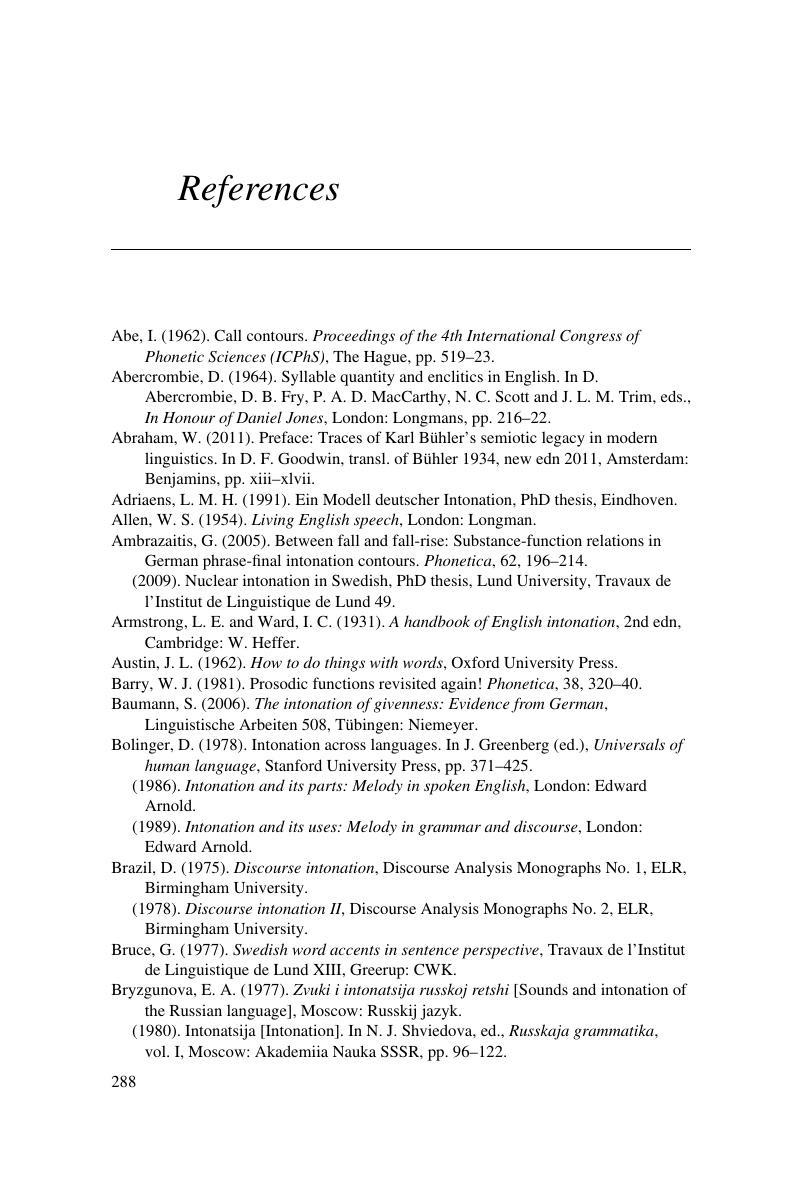Book contents
- Communicative Functions and Linguistic Forms in Speech Interaction
- Cambridge Studies in Linguistics
- Communicative Functions and Linguistic Forms in Speech Interaction
- Copyright page
- Dedication
- Contents
- Preface
- Introduction
- 1 Speech Communication in Human Interaction
- 2 Prosody in a Functional Framework:
- 3 The Representation Function
- 4 The Appeal Function
- 5 The Expression Function
- 6 Linguistic Form of Communicative Functions in Language Comparison
- References
- Index
- References
References
Published online by Cambridge University Press: 13 October 2017
- Communicative Functions and Linguistic Forms in Speech Interaction
- Cambridge Studies in Linguistics
- Communicative Functions and Linguistic Forms in Speech Interaction
- Copyright page
- Dedication
- Contents
- Preface
- Introduction
- 1 Speech Communication in Human Interaction
- 2 Prosody in a Functional Framework:
- 3 The Representation Function
- 4 The Appeal Function
- 5 The Expression Function
- 6 Linguistic Form of Communicative Functions in Language Comparison
- References
- Index
- References
Summary

- Type
- Chapter
- Information
- Publisher: Cambridge University PressPrint publication year: 2017



